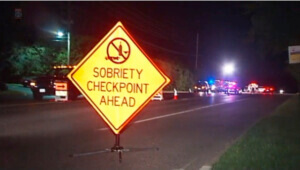Teenagers and Car Accidents
When a family watches their kids grow up and become teenage drivers, it can be an anxious time. Before you just hand over the keys to your teenager, you should know the statistics about teenage driving and motor vehicle accidents.
Auto accidents are the leading cause of death for teenagers between 15 and 20 years old.
Teenagers are known to underestimate road conditions and when teen drivers ride with other passengers then the risk of a fatal crash doubles! Read up on new traffic laws.
Our car accident lawyers here at Avrek Law try to make things simple for those families who have been devastated by a car accident (minor or major) involving their teenagers.
You can call us at 866-598-5548 or contact us online for a Free legal consultation.
Why are Teen Drivers at High Risk For Accidents
The following are two main reasons why teenage drivers are at an increased risk of motor-vehicle crashes resulting in injury or death:
- Lack of driving experience: Lack of experience means that the teen driver has less ability to detect and respond to traffic hazards and has less control over the vehicle.
- Risk behavior of adolescents: Teens tend to take more risks as they are affected by their emotions, stress and peer pressure. In addition, experimentation with alcohol and recreational drugs may impair the adolescent’s ability to drive. Also, teen drivers tend not to wear seat belts, which increases the risk of injury during a crash.
Other factors that contribute to the increased risk of teenage drivers is distracted driving and driving at night. Driving at night is more difficult for everyone, especially for novice drivers.
However, teens tend to drive far more at night, which increases the risk of a fatal car accident, compared to daytime driving.
Statistics For Teenage Drivers
Consider the following statistics involving teen driving safety and talk about them with your teenager before they decide to sit behind the wheel of a car:
- The largest proportion of teenage injuries is due to automobile accidents.
- Adolescents are much less likely to wear seat belts than any other age group.
- When teens drive after drinking alcohol, they are more likely than adults to crash, even when they have consumed less alcohol than adults.
- 33% of high school students have texted or emailed while driving
- 56% of teens admit to talking on a cell phone while driving
- 48% of teens from 12-17 admit behind in a car when teen driver was texting
- 13% of 12th graders reported driving after drinking alcohol
- 70% of young drivers killed in drinking and driving accidents didn’t use a seatbelt
- About 25% of fatal teen car crashes involved drinking and driving (MADD)
The IIHS Gives 4 Tips For Buying a Car
- Teenagers should not use vehicles with too much horsepower. Powerful engines can tempt young people to test speed limits.
- Vehicles that are both large and heavy, protect teen drivers more in the event of an accident. The list does not include small cars or mini-cars; it also doesn’t take into account small SUVs, because the weight is similar to that of a small car.
- They must have electronic stability control. This attachment helps the driver to maintain control of the vehicle on slippery curves or roads.
- Vehicles must have the best safety ratings possible. Units with good scores on IIHS tests or four to five stars in NHTSA exams should be considered over others because they can provide a safe driving for teens.
The list divides vehicles into two segments depending on their affordability, with prices starting at $5,000 and going up to $20,000. But the IIHS warned that it is very difficult to find a safe vehicle for a teenager for less than $5,000.
Among the vehicles considered the best choice for teenagers, the most expensive segment included the Toyota Prius v 2012 or later, the Honda CR-V 2012 or later, the Volvo XC60 2010 or later, the Buick Enclave 2011 or later, and the Chrysler Town & Country 2012 or later.
The best choices for the cheapest category include the Volvo S80 2007 or later, the Volkswagen Jetta 2009 or later, the Honda Element 2007 or later, the Volvo XC90 2005 or later, the Chevrolet Traverse 2011 or later, and the Volkswagen Routan 2012.
Finally, among the vehicles considered a good choice regardless of their price you can find the Acura RL 2005 or later, the Subaru Legacy 2009, the Nissan Rogue 2008 or later, the Mazda CX-9 2007 or later, and the Volkswagen Routan 2009-2011.
Check out our in depth list of safe cars for teenage drivers.

How Do Teens in California Get Their License?
Getting a driver’s license is a very exciting experience for teenagers. Just imagine it. Imagine not having to look for a person to take you to the mall or having to wait for your parents to pick you up after practicing sports.
Once you have your California driver’s license in hand, those moments will become things of the past, so take note of the following teenage driving laws.
Many states, including California, have adopted a Graduated Driver Licensing GDL program during which teens must meet certain goals before obtaining a teen driver’s license.
Many of these goals relate to age and experience and are designed to minimize the risks associated with first-time drivers; it’s like a set of teen driving rules.
It is important to remember that driving education for new drivers is a requirement for all California teenagers who are between 15 and 17 years of age.
If you have already reached the age of 17, you can apply for your permit without having taken the first road education course, but it is strongly recommended that you pass the road education program in order to better prepare yourself for driving on the road.
The first step on your way to getting your driver’s license is to get a temporary permit.
Enroll in a Road Education Course
Drivers younger than 17 years of age must have completed the road education course before obtaining a provisional permit. The course must include at least 25 hours of instruction, taught in a public or private high school or state licensed school of education.
California allows you to take the road education course in a traditional classroom, however you can also do it online.
The advantages of an online driving school course have increased dramatically in recent years. The important thing is that you can actually choose.
Pass the DMV written exam
Once you have completed the California road education course and polished your skills with a practice exam, it’s time to go to the DMV to take your written test.
Here’s what you need to bring:
- An original form DL 44 duly filled out (you must look for this form personally in the California DMV because it cannot be downloaded online).
- An identification with your full name, your age, and your social security number.
- Certificates of completion from the California road education course and driving training.
- Do not forget the signature on the documents provided by your parent or guardian.
This test will consist of written questions about traffic laws and signs, and California’s carefully-managed driving rules. The content of the test will be taken from material found in the CA DMV manual.
There are 46 questions on the written exam. To pass this exam you must have at least 38 correct answers and you will have three (3) opportunities to approve it. If you fail the test, the DMV requires you to wait seven (7) days before taking it again.
Once you pass your written exam and pay $33 in fees, you will get your provisional permit. The $33 fee covers a total of three (3) exams in a 12-month period and pays for your provisional learner permit and driver’s license.
However, if you do not meet all the requirements in a period of 12 months, the application will be considered null and you will have to repeat all the steps mentioned above.
After you have had your learner’s permit for a minimum of six (6) months (and you are at least 16 years old) and in addition have completed your 50 hours behind the wheel requirement (there are many useful defensive driving courses and classes in California and we recommend you consider taking one), you can apply for an intermediate driver’s license, called a provisional license.

Why So Many Regulations for Teen Drivers?
According to the American Academy of Pediatrics (AAP), the number one cause of death among 16 to 20 year-olds are automobile crashes.
Safe Driving Tip For Teens and Parents
The AAP has provided the following recommendations for pediatricians, along with parents, to ensure that adolescents conduct more safely and provide a good education for teen drivers:
- Emphasize to parents and teens how important it is to drive safely, including the fact that teens need to develop driving skills with supervised practice.
- As an adult, be a good example when driving.
- Set limits to your teen’s driving privileges, such as limiting the number of passengers and/or restricting the time they can drive at night.
- Impose penalties for irresponsible driving behavior.
- Supervise teen drivers in vehicles.
- Make sure the vehicle is safe to help decrease odds of being in an accident
- Get involved in community advocacy, such as helping coordinate alcohol-free events, help support parent-peer initiatives, and help teens avoid peer pressure.
- Support legislative initiatives aimed at reducing motor-vehicle accidents among teenage drivers, such as graduated licensing systems and stricter minimum age laws for driving.
Teen Driver Safety Tips
- Speeding is still a hazard, even when using seat belts. Do not rush. It’s safer to be late.
- Avoid driving at night. Your driving skills and reflexes are just developing during the first few months of driving. The darkness adds an additional factor to face.
- When you are drowsy, stop driving until you are fully awake. Drowsiness can lead to more accidents than alcohol can.
- Never drink alcohol and drive. Drinking alcohol lowers reflexes and alters judgment. These effects happen to anyone who drinks. So never drink and drive. Always look for someone to drive who has not been drinking, even if it means making an awkward call.
- Drugs can be as dangerous as alcohol. Do not mix driving with marijuana, other illicit drugs, or any prescription medicines that make you sleepy or could work as distractions from the road.
- If you are in an accident read our “what to do after a car crash“
- Read about reducing stress while driving
- If you’re in a Hit and Run know what to do
How much is your case worth?
Get a free case evaluation